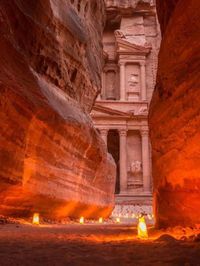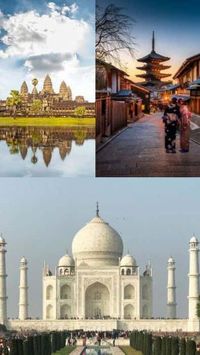As we approach April 18, the International Day for Monuments and Sites, also known as World Heritage Day, it’s a great opportunity to reflect on the cultural treasures that grace our planet. This annual event celebrates the rich tapestry of cultural landscapes and structures that play a key role in the life of individuals, communities, and nations. In 2025, the focus will be on promoting awareness of the importance of preserving these historical landmarks.
Among the most significant countries showcasing their cultural heritage is India, which boasts 43 UNESCO World Heritage Sites and has an additional 62 sites on its Tentative List. This remarkable collection underlines India’s vast historical and cultural legacy, with each site telling a unique story of the past.
One of the crown jewels of India’s heritage is the Taj Mahal, an ivory-white marble mausoleum located in Agra. Built by Emperor Shah Jahan in memory of his beloved wife, Mumtaz Mahal, the Taj Mahal is not only a symbol of love but also an architectural masterpiece that attracts millions of visitors each year.
As the world gears up to celebrate World Heritage Day, it’s essential to highlight eight must-visit UNESCO World Heritage Sites in Asia that offer a glimpse into the region’s rich history and diverse cultures. These sites are not just tourist attractions; they are windows into the past, each with its own narrative and significance.
First on the list is Angkor Wat in Cambodia, recognized as the largest religious monument in the world. This 12th-century temple complex is a breathtaking example of Khmer architecture, drawing visitors from around the globe who come to marvel at its intricate designs and historical significance.
Next, the Great Wall of China stands as a testament to ancient engineering prowess. Stretching over 13,000 miles, this iconic structure offers panoramic views and a fascinating journey into China’s storied past. Visitors can walk along its ancient paths, experiencing firsthand the grandeur of a civilization that has shaped history.
In India, the Taj Mahal remains a must-see, not just for its beauty but for the love story it encapsulates. Its stunning architecture and serene gardens provide a perfect backdrop for reflection and admiration.
Moving to Indonesia, Borobudur is the world’s largest Buddhist temple, dating back to the 9th century. Adorned with over 2,000 relief panels and 504 Buddha statues, this site is a marvel of ancient engineering and spirituality, drawing pilgrims and tourists alike.
Kyoto, Japan’s ancient capital, is renowned for its beautifully preserved temples, shrines, and gardens. This city offers a unique blend of tradition and modernity, making it a cultural treasure trove for those looking to explore Japan’s rich history.
Ha Long Bay in Vietnam is another UNESCO World Heritage Site that captivates visitors with its thousands of limestone islands. This natural wonder is perfect for cruising and exploring hidden caves and grottoes, providing a serene escape into nature’s beauty.
Ayutthaya, located just north of Bangkok, was once the capital of the Kingdom of Siam. This UNESCO-listed historic city features impressive ruins of temples, palaces, and statues dating back to the 14th century, showcasing the architectural brilliance of its time.
Finally, Vat Phu in Laos is a picturesque town lying on the banks of the River Mekong, offering splendid views and a serene atmosphere. This UNESCO World Heritage Site is a perfect example of the rich cultural heritage found in Southeast Asia.
As we celebrate World Heritage Day, it’s crucial to recognize the importance of preserving these sites for future generations. They are not just remnants of the past; they are vital parts of our shared human history. The International Day for Monuments and Sites encourages everyone to engage with these cultural landscapes and structures, fostering a sense of responsibility towards their preservation.
In 2025, the theme for World Heritage Day will focus on the significance of these sites in promoting cultural diversity and understanding among communities. It’s a reminder that preserving our heritage is not just about safeguarding the past; it’s also about enriching our present and shaping our future.
So, whether you’re planning a trip to one of these remarkable sites or simply looking to learn more about our world’s cultural heritage, take the time to appreciate the stories they tell. Each monument, temple, and natural wonder has its own unique narrative that contributes to the rich tapestry of our global heritage.
In conclusion, as April 18 approaches, let’s celebrate the beauty and significance of our world’s cultural landmarks. From the majestic Taj Mahal to the ancient walls of the Great Wall of China, these sites are more than just tourist destinations; they are symbols of our shared humanity and history.






